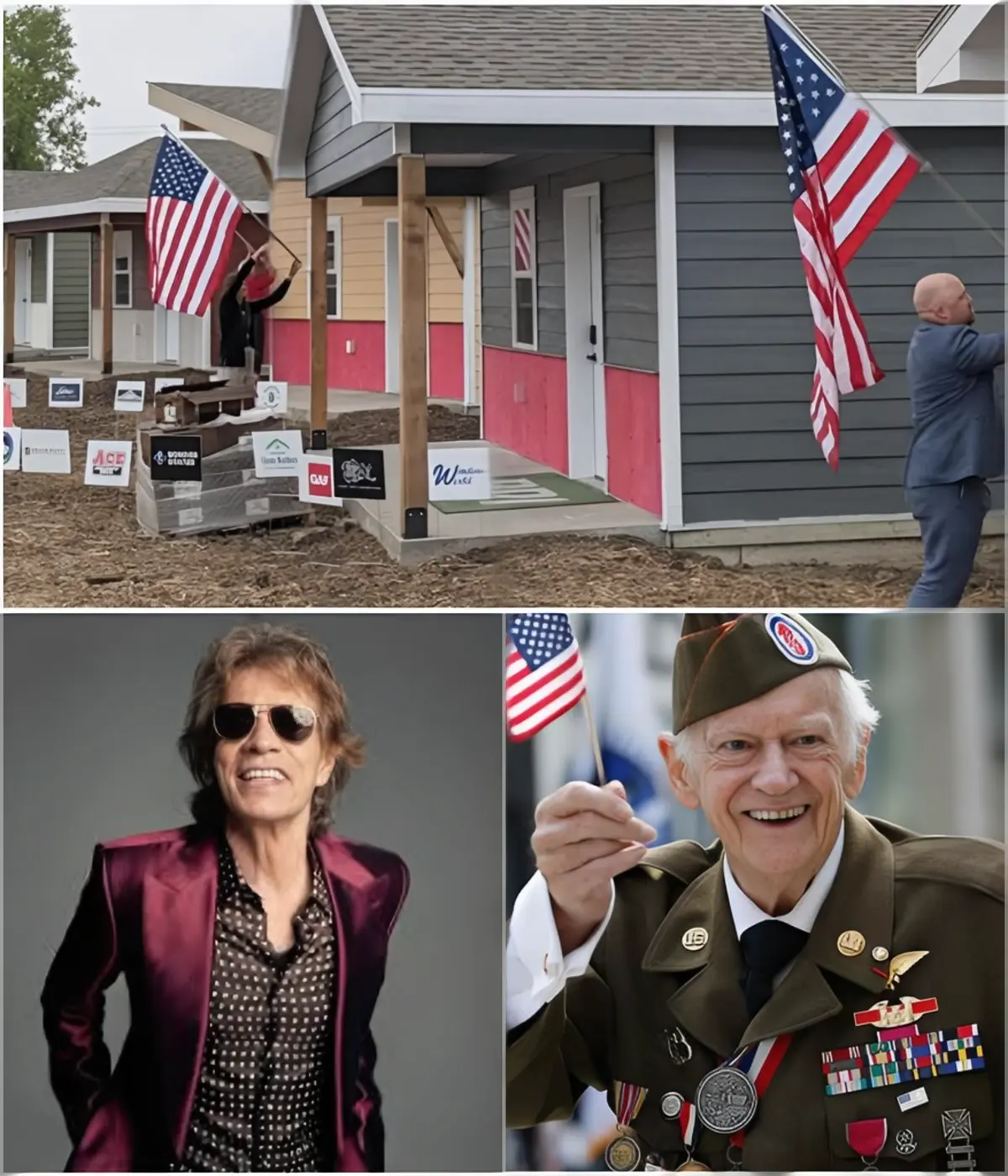Mick Jagger’s latest act did not take place beneath concert lights, nor did it echo through stadium speakers. Instead, it unfolded quietly on dusty lots where future homes for American military veterans began taking shape. What many fans assumed would be another legendary tour turned into a mission of service and gratitude.

Rather than announcing a charitable campaign or front-page initiative, Jagger simply showed up, boots dusty, sleeves rolled, ready to work alongside volunteers and construction crews. Witnesses reported seeing him hauling materials, learning carpentry basics, and offering encouragement to retired service members helping build the very homes they would someday live in.

The project, totaling seventy-seven homes, quickly drew attention not because Jagger sought it, but because word spread from those who saw him in action. Some shared photos in disbelief, others recounted emotional conversations with the music icon who, despite fame, blended into the workforce as just another pair of hands.

Observers described a man driven by sincerity rather than spectacle. They noted how he worked quietly, refusing interviews or staged photo opportunities. At times, he appeared deep in thought, pausing only to shake a veteran’s hand or express gratitude for sacrifices made in service of the country.
Fans accustomed to the swagger and electricity of Jagger’s stage presence discovered a different energy here — one grounded in humility, empathy, and a deep respect for those who once wore the uniform. Some said they barely recognized the superstar beneath a hard hat and safety vest.
The rock legend’s decision to trade global spotlights for construction sites surprised even those closest to him. Insiders suggested the project had been years in the making, inspired by stories he encountered during travels across America and heartfelt conversations with veterans facing housing challenges.
For many service members, reintegration into civilian life remains a profound struggle. Affordable housing, mental health support, employment opportunity — these needs often go unmet. Jagger, confronted with these realities, reportedly felt compelled to act not through speeches or fundraising galas but through physical presence and tangible contribution.
Construction crews noted his determination. Despite physical demands and long workdays, Jagger arrived early and stayed late, resisting attempts to give him lighter tasks. Workers remarked that he preferred lifting lumber to posing for cameras and measuring boards to giving press statements.
One veteran volunteer shared how Jagger listened quietly as former servicemen recounted deployment memories, lost friends, and life after combat. He responded not with celebrity detachment but with patience, curiosity, and genuine human connection — a trait that moved many to tears.
Community members soon began gathering at the sites, not to seek autographs but to witness something rare: a global icon using fame not as a shield, but as a platform for silent service. They left with stories not of stardom but of compassion, dedication, and humility.
The homes themselves symbolize stability and renewal. Each will house a veteran and family, offering fresh beginnings grounded in dignity and safety. For recipients, the knowledge that Jagger contributed directly created powerful emotional resonance, turning simple structures into monuments of gratitude.
Social media eventually caught wind, yet Jagger declined public comment, allowing the work to speak for itself. Admirers debated why a man with decades of accolades would embrace manual labor. Many concluded that legacy is not only built on applause but on meaningful acts that echo beyond fame.
Critics who once dismissed celebrity philanthropy as performative found little to argue here. There were no staged announcements, no stylized charity campaigns, no grand unveiling ceremonies. The absence of self-promotion became its own proof of sincerity.
Veterans who met him described the experience as grounding. Some admitted they initially doubted the authenticity of his involvement, only to find themselves working side by side with an artist who treated everyone as equals, regardless of background or rank.
Those who have followed Jagger’s career see this moment not as departure but evolution. His music captured decades of emotion, rebellion, and humanity. Now, in later years, he channels those same forces into service that transcends entertainment and touches lives directly.
Observers called the gesture one of the most meaningful performances of his lifetime. Not because it drew applause, but because it restored hope, dignity, and belonging to individuals who once stood ready to defend a nation and returned home to uncertainty.
The symbolism resonates deeply: a figure who spent life building stages now helps build shelter. A man who once electrified crowds now lifts spirit in quieter, more enduring ways. A performer once defined by motion turns his energy toward grounding others.
Fans worldwide reacted with emotion, acknowledging that greatness is not measured only by records sold or tours completed, but by compassion shown when no one is watching. Many labeled this act his “greatest hit,” a legacy not preserved in vinyl but in foundations and walls.
The story underscores a broader truth. True impact rarely demands spotlight; it demands presence. Jagger’s commitment stands as testament that humanity’s highest notes are often played far from the stage, in acts of service that ask nothing in return.
In a culture quick to celebrate spectacle, this quiet mission serves as reminder that humility remains powerful, generosity remains timeless, and compassion remains unforgettable. For the veterans who will soon turn keys in doors he helped build, the gesture is more than charity — it is respect made concrete, and gratitude cast in wood, steel, and hope.






